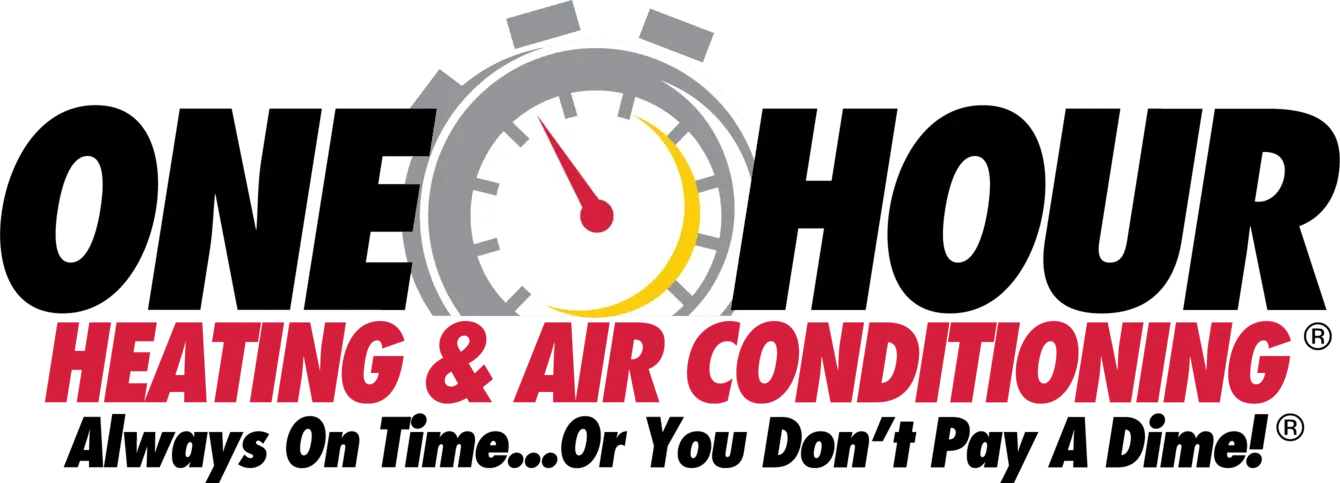Why Is My Upstairs Hotter Than Downstairs? Common Summer AC Problems
A common comfort issue for families in two-story homes is that the upstairs stays hotter than the downstairs, especially during the summer. While it’s true that heat rises, that’s only part of the story. Factors like insulation, airflow, duct design, sun exposure, and thermostat placement all play a role in your home's temperature balance. With traditional single-zone air conditioning, a 1–3 degree difference between floors is fairly normal. However, if the variance is more than 3 or 4 degrees, there may be an issue with your HVAC system or building envelope. The good news? In most cases, we can address the issue without replacing your AC. Let’s take a closer look at the common causes.
An Undersized AC Unit
Your home requires a specific cooling output to stay comfortable and energy efficient. This is measured in BTUs or tons. The average central AC size in the U.S. is around 3 tons. If your home requires 3 tons of cooling but you have a 2.5-ton unit, it likely won't keep up, especially upstairs. In multi-story homes, an undersized unit is often a major contributor to uneven temperatures. In some cases, replacing the system with a properly sized one is the best solution. This should only be done after a professional load calculation that accounts for square footage, layout, insulation, and other factors. Alternatively, ductless mini-splits can be a great option to bring extra cooling to specific areas like upstairs bedrooms, converted attics, garages, or outbuildings.
Low or High Static Pressure
Static pressure refers to the resistance to airflow within your ductwork. If it’s too high or too low, airflow becomes unbalanced, which can lead to warm areas upstairs and overworked components. A professional can measure static pressure using specialized tools and determine what adjustments are needed. Several common issues contribute to poor static pressure:
Clogged or Too High MERV Filter
Most central HVAC systems have return vents equipped with air filters to trap dust and protect your system. A clogged filter or one with a MERV rating that's too high for your system can restrict airflow and increase static pressure, making the upstairs feel hotter. Check your filter monthly and replace it every 2–3 months, or sooner if dirty. Listen for whistling or look for visible dust. Pro tip: While filters with a MERV rating between 8 and 13 are great for indoor air quality, not all systems can handle the resistance from higher-rated filters. Always check your system’s specifications or consult with a technician before upgrading your filter.
Air Leakage
Over time, duct seals can degrade and allow conditioned air to escape, especially in unconditioned spaces like attics. This reduces airflow to your upstairs rooms and contributes to a pressure imbalance. A duct inspection can identify leaks or dust buildup. If sealing is needed, a technician may use manual methods like mastic or foil tape, or advanced solutions like aerosolized duct sealants (such as Aeroseal) to restore efficiency. Duct sealing can reduce air leakage from as much as 40% to below 5%.
Incorrect Blower Speed
Your HVAC blower controls airflow, measured in cubic feet per minute (CFM). If it spins too fast or too slow, it throws off the system’s balance. Low CFM means poor circulation, while high CFM can lead to noise and energy waste. If your blower is noisy or seems sluggish, it may need adjustment, lubrication, or bearing replacement.
Blocked Returns
Closed doors, closed vents, or blocked return vents — especially on the second floor — can lead to pressure issues. Avoid blocking return vents with furniture or décor. If you have ceiling-mounted returns, keep them free of dust and debris.
Thermostat Issues
Thermostat location and calibration can greatly affect comfort. If your thermostat is installed in a non-central spot or receives direct sunlight, it may misread your home's actual temperature. Seasonal tune-ups help ensure proper calibration. You may also consider upgrading to a smart thermostat with remote sensors. These sensors can monitor temperatures in multiple areas, leading to more balanced comfort across your home.
Loose Building Envelope
A tight building envelope helps maintain indoor temperatures and keeps the heat out, especially upstairs. Inadequate insulation, worn door seals, and poorly sealed attic access points can allow hot air to infiltrate. This causes the upstairs to heat up faster than the downstairs. Air sealing and insulation upgrades can significantly improve comfort.
Inadequate Ventilation and Circulation
Poor ventilation and weak air circulation are often to blame for a stuffy upstairs. Ceiling fans help by moving air and making rooms feel cooler. In summer, set your ceiling fans to run counterclockwise at a high speed. Most standard AC systems don’t bring in fresh outdoor air — they simply recirculate indoor air. If passive ventilation isn’t enough, consider mechanical solutions. A whole-house fan or attic fan can pull in fresh air and vent out hot air, reducing the load on your AC and cooling your upstairs more effectively.
Can You Fix This Issue Without Replacing the System?
If you’re dealing with more than a 3–4 degree temperature difference between floors, we recommend scheduling an AC tune-up and air balancing service. A tune-up ensures your system is functioning efficiently, while air balancing helps redistribute airflow more evenly. If you’re aiming for perfectly even temperatures, consider adding zoning. A zoned system allows for more control over airflow to specific areas of the home and often eliminates major comfort imbalances.
How a Zone Control System Can Help
Single-zone HVAC systems deliver the same amount of air to every room, regardless of need. Zoned systems break your home into distinct temperature zones using motorized dampers and multiple thermostats. With this setup, you can deliver more cooling to upstairs rooms when needed, without overcooling the rest of your home. Zoning is ideal for multi-story homes, additions, or any layout where temperature balance is a challenge. It often requires a variable-speed air handler and works well with smart thermostats and remote sensors.
Reliable AC Fixes in St. Charles
If your upstairs is hotter than your downstairs, One Hour Heating & Air Conditioning® of Elk Grove is here to help. We proudly serve homeowners in St. Charles, IL, and nearby communities. Our certified technicians provide seasonal tune-ups, air balancing, duct sealing, and expert repairs. We also install advanced cooling solutions like ductless mini-splits, zone control systems, ventilation upgrades, and more. Call today or schedule your service online — we’re Always On Time…or You Don’t Pay A Dime!®















